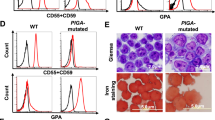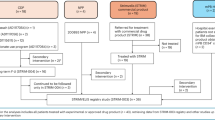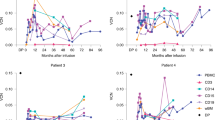Abstract
A C6 β-chemokine, CKβ8-1, suppressed the colony formation of CD34+ cells of human cord blood (CB). Molecular mechanisms involved in CKβ8-1-medicated suppression of colony formation of CD34+ cells are not known. To address this issue, the level of various G1/S cell cycle regulating proteins in CKβ8-1-treated CD34+ cells were compared with those in untreated CD34+ cells. CKβ8-1 did not significantly alter the expression of the G1/S cycle regulation proteins (cyclin D1, D3, and E), CDK inhibitor (p27and Rb), and other cell proliferation regulation protein (p53) in CB CD34+ cells. Here we describe an in vitro system in which CB CD34+ cells were committed to a multipotent progenitor lineage of colony forming units-granulocyte/macrophage (CFU-GM) by a simple combination of recombinant human (rh) GM-CSF and rhIL-3. In this culture system, we found that cyclin E protein appeared later and disappeared faster in the CKβ8-1-treated cells than in the control cells during CFU-GM lineage development. These findings suggested that cyclin E may play a role in suppressing the colony formation of CFU-GM by CKβ8-1.
Similar content being viewed by others
Article PDF
Author information
Authors and Affiliations
Rights and permissions
This is an Open Access article distributed under the terms of the Creative Commons Attribution Non-Commercial License (http://creativecommons.org/licenses/by-nc/3.0/) which permits unrestricted non-commercial use, distribution, and reproduction in any medium, provided the original work is properly cited.
About this article
Cite this article
Noh, EK., Ra, JS., Lee, SA. et al. CKβ8-1 alters expression of cyclin E in colony forming units-granulocyte macrophage (CFU-GM) lineage from human cord blood CD34+ cells. Exp Mol Med 37, 619–623 (2005). https://doi.org/10.1038/emm.2005.75
Published:
Issue date:
DOI: https://doi.org/10.1038/emm.2005.75



